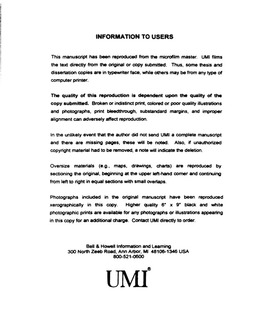| dc.contributor.advisor | Resasco, Daniel, | en_US |
| dc.contributor.advisor | Harwell, Jeffrey, | en_US |
| dc.contributor.author | Kitiyanan, Boonyarach. | en_US |
| dc.date.accessioned | 2013-08-16T12:30:55Z | |
| dc.date.available | 2013-08-16T12:30:55Z | |
| dc.date.issued | 2000 | en_US |
| dc.identifier.uri | https://hdl.handle.net/11244/5972 | |
| dc.description.abstract | A synergistic effect between Co and Mo has been observed. When both metallic species are simultaneously present, particularly when Mo is in excess, the catalyst is very effective. However, when they are separated they are either inactive (Mo alone) or unselective (Co alone). To understand this synergistic effect, X-ray absorption spectroscopy (EXAFS and XANES) has been used to characterize the state of Co and Mo on the catalysts before and after the production of SWNT. Co species has found to alter from cobalt oxide in fresh catalyst to metallic cobalt after the reaction, with its particle size growing with reaction time. In the case of Mo species, the molybdenum carbide is identified in the catalyst after the reaction while molybdenum oxide is observed in the fresh catalyst. | en_US |
| dc.description.abstract | Carbon nanotubes has shown their outstanding properties and potential applications. However the production of carbon nanotubes is still in the gram-scale that results in the very high cost, particularly single-wall type. The production of single-wall carbon nanotubes (SWNTs) by heterogeneous catalytic reaction is the most promising technique to manufacture this material. Among several catalysts tested in this study, a family of Co-Mo catalysts on silica support has been found to be able to produce SWNTs from carbon monoxide (CO) disproportionation with high selectivity, depending on the Co:Mo ratio, and the reaction condition. The catalyst composition and operating conditions for the synthesis of SWNTs from CO disproportionation have been systematically varied in order to maximize the selectivity towards SWNTs. A simple quantification method based on the standard Temperature Programmed Oxidation (TPO) technique has developed in order to determine the distribution of the different forms of carbonaceous deposits presenting on the catalysts after the CO decomposition reaction. | en_US |
| dc.format.extent | xvi, 157 leaves : | en_US |
| dc.subject | Catalysts. | en_US |
| dc.subject | Carbon monoxide. | en_US |
| dc.subject | Carbon. | en_US |
| dc.subject | Engineering, Chemical. | en_US |
| dc.title | Single-wall carbon nanotubes production by heterogeneous catalytic reaction. | en_US |
| dc.type | Thesis | en_US |
| dc.thesis.degree | Ph.D. | en_US |
| dc.thesis.degreeDiscipline | School of Chemical, Biological and Materials Engineering | en_US |
| dc.note | Source: Dissertation Abstracts International, Volume: 61-05, Section: B, page: 2651. | en_US |
| dc.note | Advisers: Daniel Resasco; Jeffrey Harwell. | en_US |
| ou.identifier | (UMI)AAI9972510 | en_US |
| ou.group | College of Engineering::School of Chemical, Biological and Materials Engineering | |
